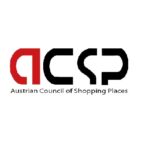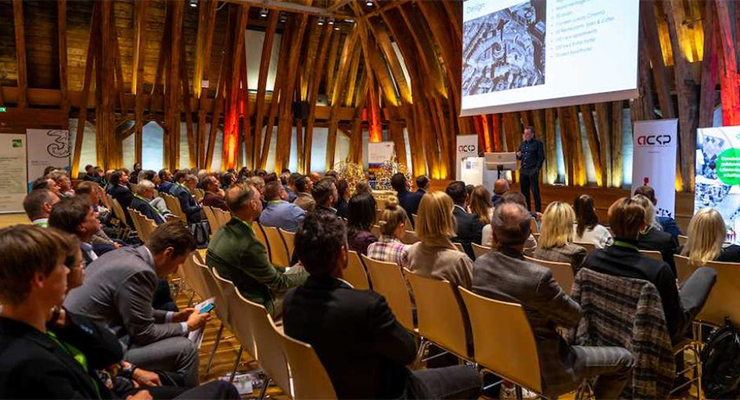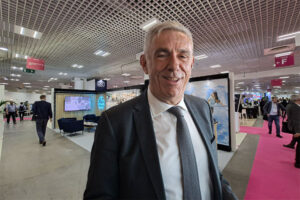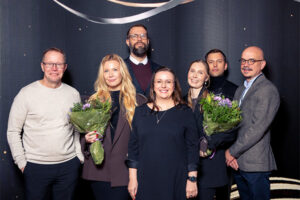The congress program covered 9 presentations by renowned guest speakers, with expertise spanning across Futurology, Data Science, Architecture, Project Management, and many more.
Futurologist Max Thinius started off the first round of presentations focusing on “The future of cities”. He argued that future quarters with mixed-use properties need to explore the idea of including retailers in their lineup that work with local manufacturers to create new products for the customers. Thinius also addressed online retailing, but is of the opinion that, in contrast to brick-and-mortar, “online retailing has no added value for local manufacturers and developers.”
Quarters – Asset classes of the future
The second presentation by bulwiengesa – one of the biggest valuation companies for real estate properties in Germany – marked quarters as the asset class of the future. “Even though the idea of quarters goes back to the 1960s, the level of connectivity required today – enhanced also through mixed-use developments – makes them more important than ever”, explains Thomas Voßkamp, Geographer, and member of the company´s directorial board. After naming a few current trends in the German real estate market, such as the decrease in the number of offices on the one hand, and the increase of local suppliers on the other, he argues that despite the negative developments, incorporating other facilities, such as kindergartens, can contribute to a more stable mixed-use development in quarters, and help offices regain their value.
The first practical example of a quarter – partially still in development – was HafenCity in Hamburg. As Gesa Matthes, responsible for strategic innovation at HafenCity Hamburg GmbH, explained “important for the development of the quarters HafenCity and Grasbrook are an urban and green mix, connecting office and residential buildings with numerous parks and leisure areas.” On top of aiming at the green urban-area concept, the two quarters are located at the harbor, thus providing an extension of the city center for the visitors moving around by boat.
In a recent PwC study, presented by PwC Real Estate Leader Marius Richter, center managers across Austria were asked, among other things, about the general prospect of classic usage concepts, and the integration of quarters. Key findings include the observation that classical usage concepts are not resilient anymore, thus operators need to take changing customer needs and market conditions more into consideration, while the reuse of space is a viable option. Another observation is that shopping centers will have to be integrated into quarters, thus making the trend of the 15-minute city possible – to which economic efficiency, conformity with ESG standards, and social awareness are major contributing factors. Finally, the study made it clear that customer frequency does not mean much when retention time is generally low.
Regenerating the city center
The second practical example of quarters was presented by Colin Meikle, Urban Designer at Building Design Partnership in Scotland. Liverpool One and St. James Quarter are two very defining developments. The recently constructed Liverpool One is a project that successfully regenerates the city center on an area of 170,000 sq m. The retail-led mixed-use development combines residential, entertainment, and office areas, including a 20,000 sq m park. Similar to Liverpool One, the St. James Quarter in Edinburgh is a city-center regeneration project. A redevelopment of a former shopping center built in the 1960s, the site has been turned into a proper mixed-use property with residential and retail areas, and a part of it, namely the apartment section of the building is yet to open.
Further practical examples and new ideas were brought by Oskar Januschke, City and Regional Manager, who, among others, introduced the example of a small-town quarter in contrast to the previous city quarters. In Lienz in East-Tyrol, the construction of the first shopping quarter is already in progress, with the development to open next year. The project puts a lot of emphasis on collaborating with the local store owners, and craftsmen, which has ultimately led to the locals partially financing the marketing for the project.
Urban development in Vienna
Turning towards a quarter project bigger in size, Martin Hemetsberger, SES Project Leader for Real Estate Development, brought the example of “Seestadt Aspern” in Vienna, which is currently the biggest ongoing quarter development project in Central Europe. Made up of many smaller quarters, Seestadt aspires to create a development, where each quarter has its own residential area and shopping street. When completed, Seestadt Aspern will have 26,000 inhabitants and 20,000 jobs. There are currently 27 stores with a total lettable area of 8,000 m, with a further 50 stores or 16,000 sq m planned.
The final presentation was focusing on the transformation of urban spaces. Stefan Mayr of Superwien summarized in 7 points how a lively quartier can be constituted. Planning and strategy should be integral and spacious; Participation and Dialogue with the project´s contributors is essential, especially in the planning phase; Open processes create acquisition and trust; Room should be left for unforeseeable scenarios; Bottom-up initiatives need to be better incorporated in the planning phase; Need to create added value for the environment/city, and finally, Branding and Marketing.

Next ACSP Congress
Also, for next year the date has been set as being 18.11.2024, and the place of the event as the Cupola Hall located in the Technical University of Vienna.






